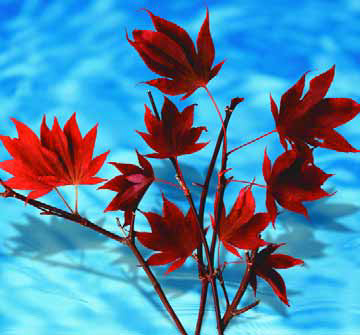Occasionally, we run pairs or sets of articles that seem to have nothing in common at first glance, but that actually, on closer examination, harmonize in unexpected and important ways. To be sure, we quite deliberately revisit key themes throughout the pages of all of our issues, but sometimes, it seems, the most powerful music
There's no room for guesswork when it comes to structural engineering, says Ron Lacher of Pool Engineering, Inc., and that's especially true when it comes to concrete structures designed to contain water. Here, he opens a series on structural fundamentals related to watershapes by defining the need for precise structural planning and careful attention to workmanship - the keys, he says, to achieving a project's aesthetic and functional goals. Despite the apparent intricacy of any good set of engineering drawings and contrary to what many people think, structural plans for concrete watershapes are pretty cut and dried. At the most basic level, the art and science of structural engineering deals with predictable forces placed upon structures and with the construction techniques and materials required to counteract those forces. The basic mathematic calculations are straightforward stuff, and everything runs in accordance with building codes that
The notion that water can be used to treat physical problems and conditions is not new. In fact, when you study the history of watershaping and aquatic design, one of the first things you learn is that the ancient Romans might actually have had a better grip on the healing and nurturing powers of water than we ever will. In our own work in designing and installing environments that nurture the spirit and invigorate the body, we pursue that Roman heritage as best we can - and always keep water in mind as a key component. The project described in this article stands as one our most dramatic explorations of the curative power of water to date. The pool, spa and
Just as few sounds blend so beautifully or evoke such sensations of peace and calm as the sweet tones of birds singing along with the relaxing music of moving water, I'd also have to say that few sights in nature delight the eye more than watching migrating robins queuing up for a bath, hummingbirds darting through a mist or a bold vireo "plunge bathing" in a rippling pool. For most of my life, I've been inspired to observe the beauty and freedom of birds and am among those who have spent hours in the wild hoping to catch a glimpse of a
Back in February's WaterShapes, I stepped a bit beyond the usual in discussing Harvests of Joy by Robert Mondavi, noting that I'd read the book based on a recommendation from fellow WaterShapes columnist Brian Van Bower. I also mentioned that the book was one of the most important I've come across in recent years. This time around, I'd like to review another of Brian's recommended books - one he suggested during a seminar I recently attended and which has also proved to be wonderfully useful and extremely influential: Samurai Selling: The Ancient Art of Service in Sales by Chuck Laughlin and Karen Sage with Marc Bockmon (St. Martin Press, 1993). Until I read this book, my sense of what Samurai were all about was based on no more than warrior movies and video games. What I learned instead is that Samurai based their lives entirely on a concept of service (of which warfare was only a small part). The authors use the philosophy of the Samurai to define
Tucked into a small cove in the mountains behind La Quinta in California's lower Coachella Valley, The Quarry Golf Club is hidden, ultra-private and basically unknown to all but members of the golfing elite and the wealthy few who play the course. First conceived by entrepreneur Bill Morrow and designed by renowned golf course architect Tom Fazio, the course is a prime example of just how beautiful golf courses can be - and of how critical a role landscaping and watershapes can play in defining their character and aesthetics. Our challenge was to embroider the course's 18 PGA-sanctioned, championship-caliber holes with
For the most part, the designers and builders of pools, spas and other watershapes visualize their projects in full sun, install them during daylight hours and seldom (if ever) see them after the sun goes down. That's both a problem and a shame, and it's reflected in the fact that the run of projects you encounter by mainline pool-industry folks - and, to a lesser extent, by people from the landscape trades - tend to treat the lighting of exterior spaces as an afterthought if it's really thought about at all. In fact, I'll go so far as to say that
If I could point to one plant that will consistently stand out in just about any garden, it would have to be the maple. Virtually no Asian-style garden would be complete without one, and they fit beautifully into gardens of many other styles as well. I particularly like pairing maples with watershapes because of their tendency to soften the edges of typical hardscapes and the way they are reflected by the water. When placed well, a specimen or single maple can indeed be a key
Earlier this year, I was treated to a guided tour of The Quarry Golf Club in La Quinta, Calif., by landscape architect Ken Alperstein. Although I had seen pictures of the course and was also





















